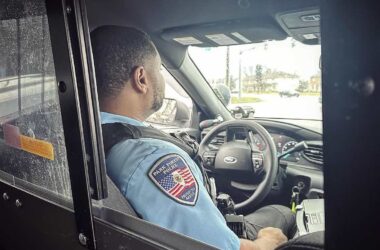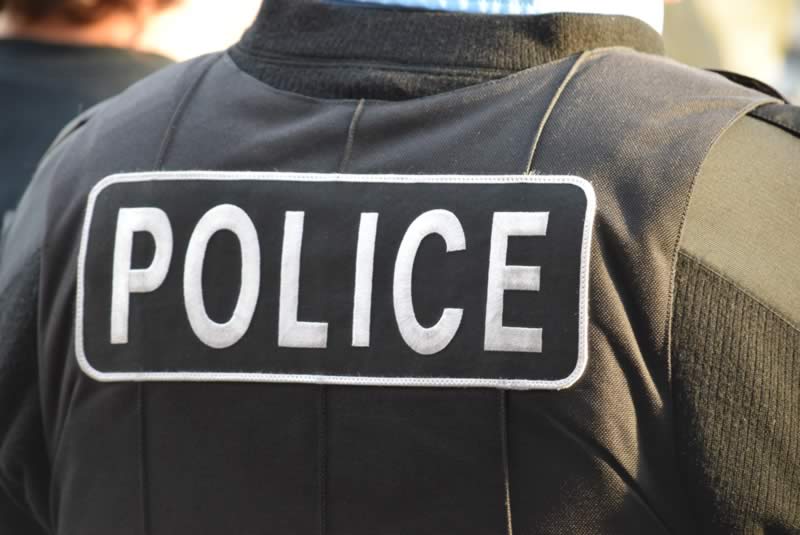CHICAGO–(ENEWSPF)–February 18, 2011. More than a year after uncovering a horrific scandal at Burr Oak Cemetery, Cook County Sheriff Thomas J. Dart detailed new concerns about what he has learned are common practices in the cemetery industry – practices he said are not only disturbing, but which also threaten to impede criminal investigation processes by law enforcement agencies.
Dart’s concerns center on indigent burials. Paid by taxpayers, hundreds of these burials are done every year at a private cemetery, where an elevated hill has been created as a result of bodies being layered as much as eight high before they decompose atop one another. Also raising concerns is that after unidentified limbs and bones are recovered by police, they are analyzed by a medical examiner, then placed inside wooden coffins along with babies whose parents couldn’t afford a proper burial. As many as 26 babies were buried together earlier this month, in the same wooden box as assorted items identified only as “mixed tissues.”
These and other burial practices came to light in the wake of a sheriff’s 2009 investigation at historic Burr Oak Cemetery in Alsip, where the cemetery’s manager and three employees were arrested for their roles in a years-long scheme to unearth hundreds of interred bodies, dump the remains, then collect cash to bury someone new in that plot.
Though many concerns were raised about other burial practices, Dart found limited regulation or oversight for the industry. That led to new state guidelines for burials. But there remain continuing concerns – including those tied to recent sheriff’s cases – where the process for handling indigent burials can hinder an ongoing criminal investigation.
Dart pointed to a 6-year-old cold case his investigators solved in November 2010. Though Glenn Serratt, 49, of Justice, had gone missing in 2004, he was never reported as missing. Because he was unidentified at the time of his 2004 death, he was set to be buried as an unknown indigent at Homewood Memorial Gardens. But investigators stopped his burial and held his body while pursuing DNA matches. Last fall, a match was made and his family recovered his body for burial.
But such actions are not standard law enforcement practice. Serratt otherwise would have been buried among the stack of bodies in the burial mound at the northeast corner of Homewood Memorial Gardens, where thousands of bodies have been buried since that cemetery originally won the contract for indigent burials in 1980. Hundreds of those bodies are of people unknown.
Another relevant case came in 2003, when sheriff’s investigators found the remains of a newborn discarded after birth. That baby remained unidentified and, before anonymous donors paid for a burial, was set to be placed in a box with other dead newborns, medical waste and assorted bones, before being layered atop other remains in the same burial mound in Homewood. But investigators took a DNA sample before the burial, allowing them to continue searching for a match with a parent in any national databases going forward.
Dart also learned of another law enforcement agency recently seeking to exhume an indigent burial from the 1980s and realized the roadblocks that could exist.
In both sheriff’s cases, investigators took DNA evidence from the bodies before they were buried as a matter of practice. But through those cases, Dart learned that is an extra step his investigators take on their own, as there is nothing requiring any law enforcement agency to take a DNA sample before turning the body over for burial. Though a blood sample is taken, that sample is not sent to any databases and becomes useless after a number of years. As of today, the Sheriff’s Office has dozens of cold cases it is investigating which could, at any point, be tied to any of the unidentified bodies or indigents stacked in the burial mound.
Dart called for statewide change in handling the burials of unidentified and indigent persons, supporting a bill sponsored by State Rep. William Cunningham (D-Chicago). HB1457, introduced last week, requires all coroners or medical examiners to obtain a DNA sample for those unidentified at the time of burial, then affixing a metal identification tag to the body. There are about 12 unidentified people buried in Cook County every year. Taking a DNA sample from those 12 could also prove useful to the National Crime Information Center, which lists more than 100,000 people as missing. The bill calls for a $1 fee to be added for copies of death certificates to cover any incurred expenses.
Dart called on Cook County Commissioners to conduct a hearing on the issue before signing a 2011 contract for indigent burials. Homewood Memorial Gardens has held that contract since 1980 and most recently served as the only bidder for the 2009-10 contract. That 2-year deal called for the cemetery to be paid $167,300 to handle all indigent burials – with the county billed per casket. Over 30 years, the county has averaged 250 indigent burials a year, though it dropped to just 137 last year.
Though the county contract requires the cemetery to provide an exact location of all indigent burials, investigators learned there is no mapping system and cemetery staff simply use a dead tree on the cemetery grounds to give vague descriptions of approximate locations of bodies if requested.
The indigent burial process begins when bodies are picked up by Homewood staff in a rented U-Haul truck, then unloaded for burial in the designated corner of the cemetery. There is no county representative on site and though the current contract says bodies are only to be buried side-by-side, Dart witnessed the indigent burial process on Feb. 1 and learned that is not being followed. Cunningham’s legislation would also limit how many bodies can be stacked atop each other, while it also prohibits the burial of multiple people in one casket.
Source: cookcountysheriff.org








